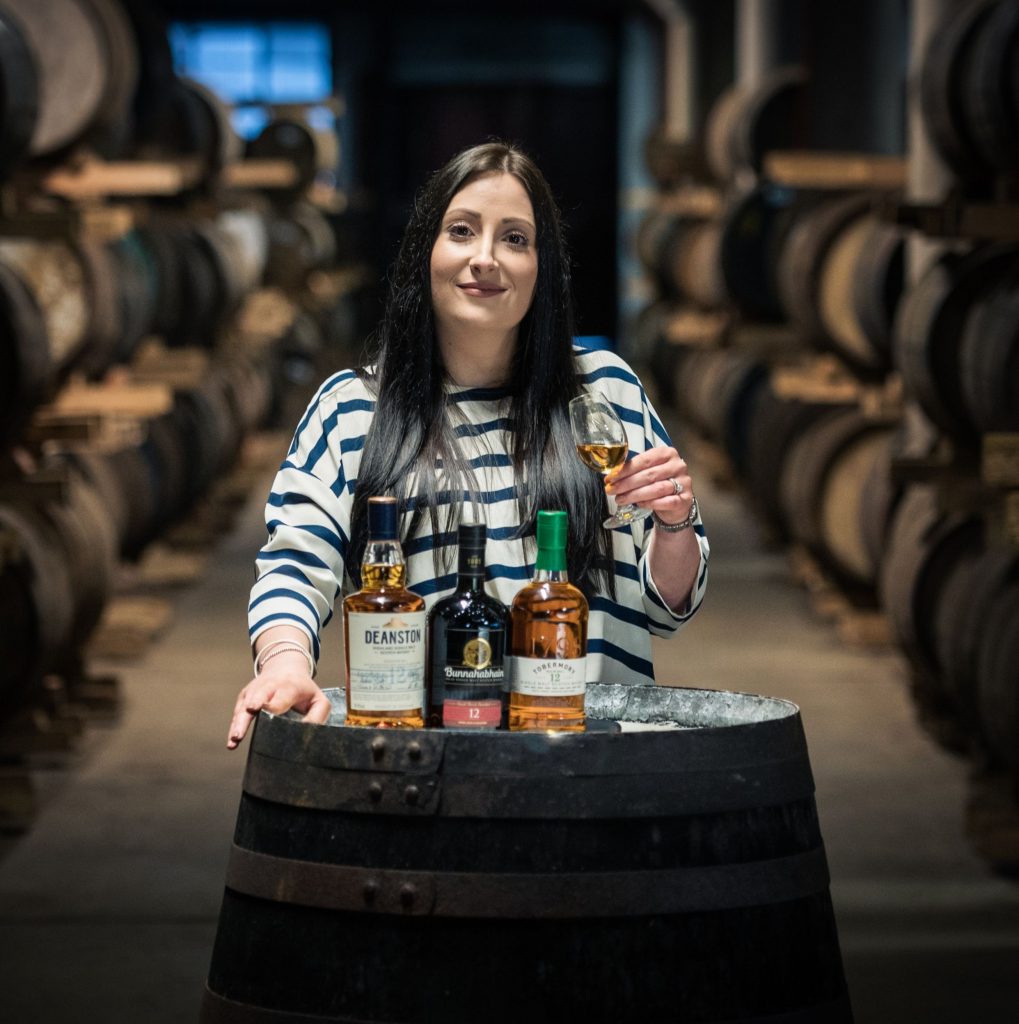Julieann Fernandez on Tobermory 23
Author: Issariya Morgan

Julieann Fernandez is Master Distiller at Tobermory and the mastermind behind Tobermory 23. We speak to her about Tobermory’s creative spirit and breaking down barriers in the whisky industry.
Can you tell us the background story of Tobermory?
Tobermory’s history dates back to 1798. It’s the only distillery on the Isle of Mull, as well as one of the oldest commercial whisky distilleries in Scotland. Previously, it was known as Ledaig, which means “safe haven”. Tobermory’s had quite a chequered past, marked by closures and financial troubles – it’s closed down a number of times but managed to endure. We actually closed it down in 2017 to do some maintenance and renovation, before reopening in 2019.
While we were closed, we brought a gin still over from South Africa and had it built into the distillery – so now, we have a little gin distillation plant. It’s a beautiful still. Besides our gin, Tobermory has always produced two spirits: we have Tobermory, which is our unpeated spirit, and Ledaig, which is our peated bottling. Production for them is split roughly 50-50 throughout the year.
The distillery is right at the heart of a vibrant island community and everyone who works there stays local. It’s a wonderful place to work.
What has your journey at Tobermory been like?
My journey has been quite varied. I joined [international drinks company] Distell in 2017, just as they were closing down Tobermory. At the time, I was working as a blender and assisting on all the projects that we did for Tobermory. I was basically in charge of the gin development project that we did. In 2019, I was promoted to Master Blender. So now, I’m fully responsible for everything that we make at Tobermory, looking after all the core products such as cask finishes, limited editions and our gin.
You’re the mastermind behind Tobermory 23. Could you tell us about how it came into being and the processes behind it?
Tobermory 23 is a really special spirit to me. We used to have a 15-year-old whisky, but we chose to discontinue it. We still had liquid which was laid down – it was maturing at the distillery in Oloroso [Sherry] casks. We sampled the casks that were maturing in our tiny little warehouse in Mull, trying to find that sweet spot for when the spirit was ready to re-launch. The 15-year-old was already a beautiful spirit, but the extra few years in Oloroso casks have just added more depth and complexity, and it’s taken on a phenomenal colour. We’ve retained the traditional Tobermory spirit with its wonderful citrussy notes, and the Oloroso has complemented that and added an extra layer to it. I feel like we’ve got the balance just right.
Would you describe your approach as traditional or innovative?
I think we always need to stay true to who we are – and whisky is always going to have that traditional side to it. But for me, it’s almost about ripping up the rulebook and doing things a little differently. It could be a result of being in this job and being female and a little bit younger, in an industry which before has been seen as male dominated.
I like being able to experiment with things. If you look at Tobermory and where it’s situated, it’s right next to all these beautiful brightly coloured houses in a very creative place. I think that’s what I try to bring to Tobermory – something a little different, where you can be expressive and creative – rather than trying to stay traditional.
Have you encountered any challenges working in an industry perceived to be traditionally male dominated?
No, I’ve been really fortunate. I’ve been in the whisky industry for just over eight years now, and I’ve worked in a range of places. Originally, I was working in a lab, involved in the research side of whisky. From there, I worked in a grain distillery and a malt distillery. But I’ve never felt discriminated against in any way; a lot of the people that I look up to, the role models I’ve had, have been both male and female. I’ve been so fortunate to have some fantastic mentors who have really been there to support me on this journey.
What kind of legacy would you like to leave in the whisky industry?
We always want to produce whiskies of the highest standard, so that anyone buying whisky from us is really going to love it. But I’d also like people to see us as breaking down the barriers and cutting through some of the snobbery that you see in the whisky industry around how it should be drunk. I feel that people should be expressive with how they drink our whiskies, whether they want to drink it neat, with ice or as part of a long drink. There’s a lot of focus on there being a right and wrong way to drink whisky – I don’t believe there is. As long as you’re enjoying it, that’s the main thing. I think there’s a whisky out there for everyone.
Take a look at Tobermory 23 here.


